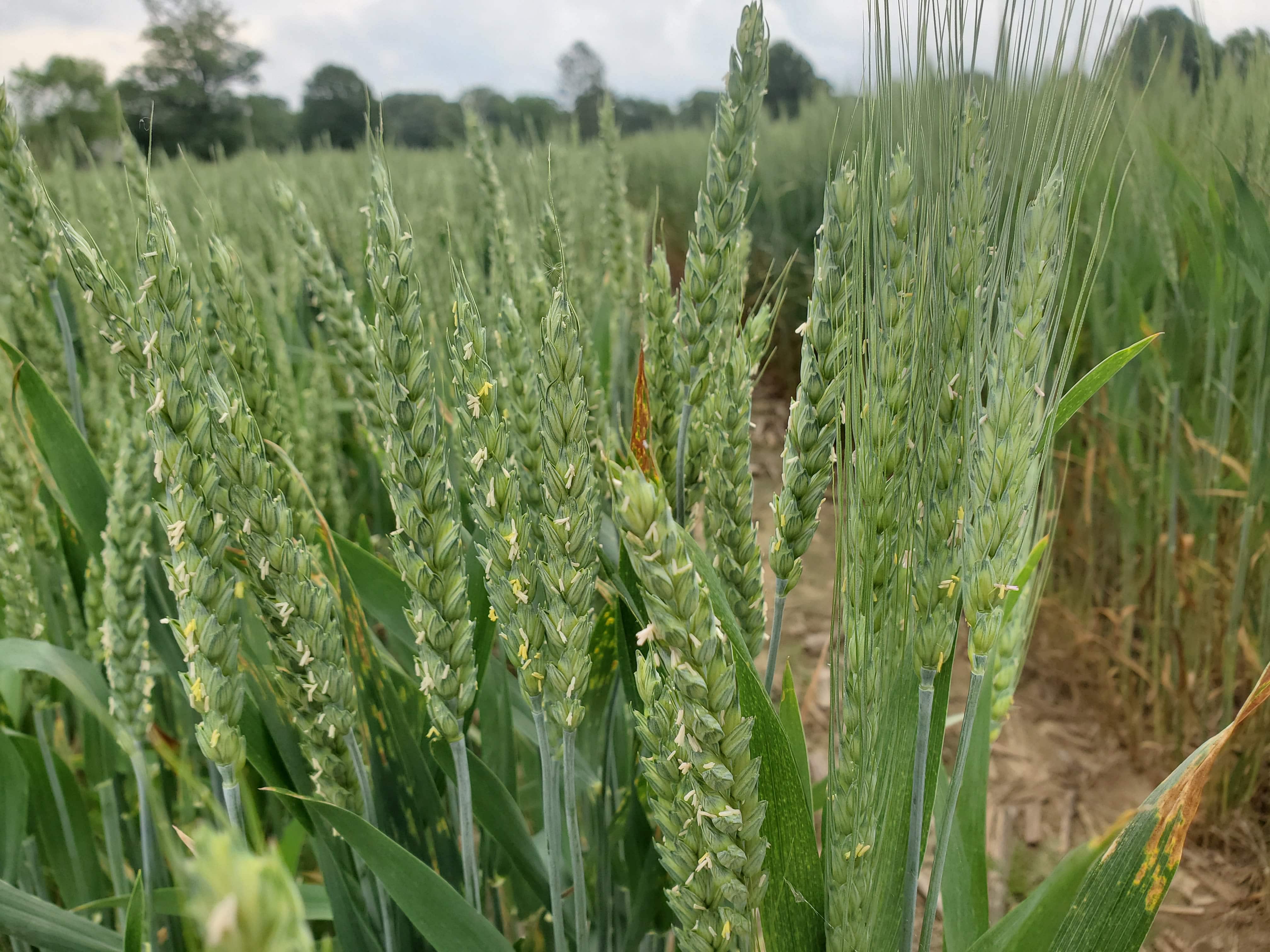So far only some bacterial streak and Septoria/Stagonospora have been reported in Tennessee wheat.
Most wheat has passed flag leaf and is in or close to heading, and I have only had reports of leaf spots of Septoria/Stagnospora and bacterial streak. With such low levels of disease present and stripe rust not even being found to the south (LA) as of yet, the next timing to consider fungicide application is bloom to protect from Fusarium Head Blight/head scab, which will be in the next few weeks for most fields. While Miravis Ace can be applied at heading to provide protection from head scab, the best protection again mycotoxin levels are applying a non-QoI/non-strobie fungicide at beginning bloom (Image 1).

Products that contain a QoI/strobulirin can increase mycotoxin levels and should not be applied at heading or later. Specific fungicide labeled for wheat diseases, including those to manage Fusarium Head Blight/head scab and their efficacy can be found on the TN Wheat Fungicide Efficacy publication (https://extension.tennessee.edu/publications/Documents/W341.pdf). Also, the Fusarium Risk Tool (https://www.wheatscab.psu.edu/) can be used to gauge the risk of Fusarium Head Blight/head scab for your area.
Both the leaf symptoms of Stagnospora leaf spot and bacterial streak may also effect the wheat heads with purple to brown discoloration of the kernels. Short descriptions of fungal wheat diseases which include conditions for disease development, symptoms and specific management options can be found along with images in the Fungal Wheat Disease Identification publication (https://extension.tennessee.edu/publications/Documents/W662.pdf) and at guide.utcrops.com (mobile friendly site). General disease scouting time line and guidance on timing of fungicide can be found in the UT Extension Wheat Disease Management publication (https://extension.tennessee.edu/publications/Documents/W663.pdf).
It’s best to first identify the disease you’re trying to management and then choose the best fungicide for the job. The wheat fungicide efficacy table, that university wheat pathologists across the nation contribute to, is a good source to match fungicide efficacy to specific diseases. Each state will have its own version of the table, here is the TN Wheat Fungicide Efficacy publication (https://extension.tennessee.edu/publications/Documents/W341.pdf) and the generic national one can be found at the Crop Protection Network as well as other field crop resources – https://cropprotectionnetwork.org/.

